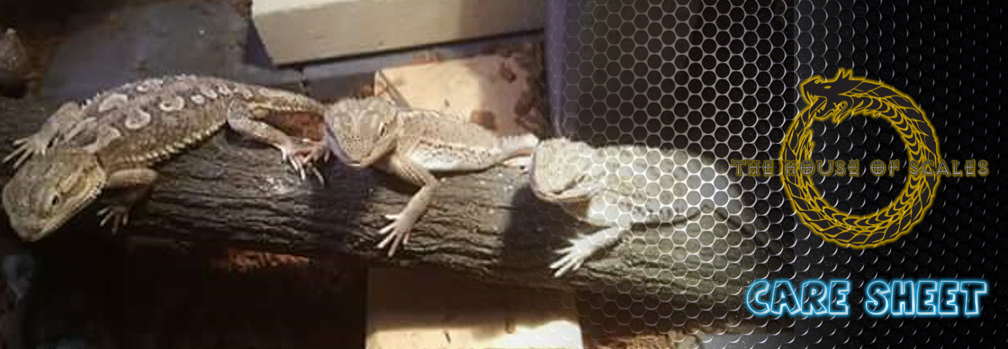Pygmy Bearded Dragon Care and Advice Sheet
| Quick Facts: | |
| Common Name: | Pygmy Bearded Dragon or Black Soil Bearded Dragon |
| Scientific Name: | Pogona henrylawsoni |
| Colour: | Grey and light-to-dark tan in alternating bands |
| Size: | Generally 20 – 25cm however, can grow as big as 30cm |
| Life expectancy: | Approximately 10 years in captivity |
| Temperament: | Calm but active, and non-aggressive social lizards |
| Natural Habitat: | Parts of central western Queensland (black-soil plains) |
This care/advice sheet has been broken down into the following subjects:
– Housing, Lighting, and Enclosure Setup
– Feeding, Diet, and Handling
Click here to access a PDF version of this care sheet.
Housing, Lighting, and Enclosure Setup
Housing:
The size of your enclosure will be dictated by how many Pygmy Bearded Dragons (PBD) you are housing.
For 1 – 2 adult PBD’s it is recommended that your enclosure is at least 600 x 450 x 500. Housing two PBD’s together can be tricky though as you will generally find that one will assert dominance over the other which can result in life threatening issues, such as the subordinate ceasing to eat. We recommend that you either choose to house one or three or more together, and not two so as to avoid this from occurring. We also recommend graduating your PBDs to a 120cm enclosure if you have three, once they start to mature. PBD’s are typically social lizards who enjoy a community environment.
In summary:
– Ensure your enclosure is big enough for the number of PBDs you will have
– Choose one, three or more, not two PBDs
Lighting and Heating:
PBDs are diurnal, which means they are day time animals so it’s important to set your heating and lighting accordingly to have a day/night cycle of 14 hours of day and 10 hours of night.
Using at least a 5.0 UVB will ensure your PBD is getting the UV it needs to help nutrient absorption and maintain bone development which is extremely important in growing PBDs.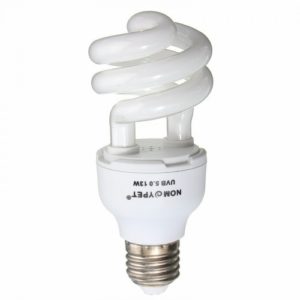
Placing your enclosure in natural light can cause confusion for the PBDs when the sun goes down as they will tend to pay more attention to that and go off to bed then, rather than when the lighting in the enclosure goes off. So where possible, don’t place your enclosure where there is a lot of exposure to natural light.
Along with being diurnal, PBDs are also ectotherms (cold blooded animals). This means that a constant heat source is required.
A basking light is recommended to push heat down into the enclosure, along with a heat mat or cord, to help with food digestion and regulating the night time temperature.
You will find that your PBD will spend most of its time basking under the heat lamp, so the mat and/or cord will be primarily to ensure that the most amount of energy is absorbed from the food it consumes, as heat helps to promote digestion, and to keep the floor warm at night.
The preferred body temperature of a PBD is between 32-34ºC meaning that you will need to ensure the basking area hits at least the 35-40ºC mark.
The cool end of the enclosure should be sitting at around 27ºC. If you are having trouble regulating the high in one end and low in the other, you may be using a globe that is too powerful or the enclosure could be too small.
In summary:
- PBDs are day time animals that need a constant heat source
- A UV bulb IS required to keep your PBD healthy
- Try to avoid placing enclosure in natural light
- The basking area temperature should be 35-40ºC
- A heat cord or mat is needed to keep the enclosure floor warm all day/night
- The cool area of the enclosure should be around 27ºC
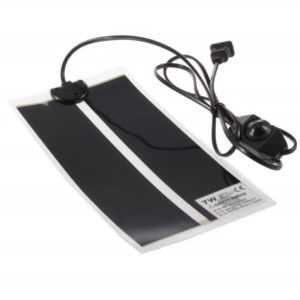
Enclosure Setup:
This is the fun part, decorating the enclosure for your new pet/s.
PBDs aren’t very picky and are easily kept happy as long as the temperatures are right and they have something to climb on. Generally, placing logs, rocks, pavers, anything that can be scaled, underneath the basking light will prove to be their favourite place in the enclosure, that and their food bowl!
You can be as creative as you like just think through your choices to make sure the items you place in the enclosure are practical for the PBD and are non-toxic.
We’ve placed a picture below of our PBD enclosure to give you some ideas. We do recommend moving things around every now and again to promote curiosity and interest.
The use of a reptile hammock is not only a great way to help create a temperature controlled basking area, but is also a lot of fun for your PBD to explore and sleep on.
For more details about custom made reptile hammocks please contact us at: thehouseofscales@outlook.com
In summary:
- Place items that your PBD can climb on to bask in the heat
- Ensure no toxic items are used as decorations
- A reptile hammock is the ideal way to create a temperature controlled basking area
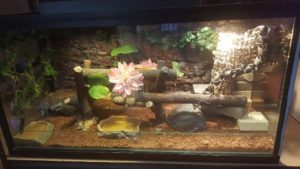
Substrate:
There are a variety of substrates that are safe to use in a PBD enclosure, ranging from wood shavings, to sand, cat litter, and even fake grass. All of these need to be cleaned out and changed every four weeks (fake grass can be kept but needs to be disinfected), with any little surprises that have been left for you overnight being removed each day to keep the enclosure clean and safe.
In summary:
– Choose a substrate that can be easily cleaned but not digested
– Clear out any poops daily
– Change substrate every 4 weeks
Feeding, Diet, and Handling
Feeding and Diet:
PBDs will primarily eat a diet of chopped vegetables and various insects, with fruit as a treat.
Crickets will be your primary go-to-food as they are not only popular with PBDs but are also very good for them and readily available. Giving the crickets a light sprinkling/dusting in calcium and vitamin dust before placing them in the enclosure for feeding time is recommended to help fight against metabolic bone disease (MBD) and to keep your PBD in general good health.
As a guide for calcium/vitamin dusting:
- From a few weeks old to two months old, PBDs needs calcium and vitamin dust once daily.
- From two months up to six months, PBDs need calcium daily and vitamin dust every other day.
- From six months to one year old, PBDs now need calcium every other day and vitamin dust roughly three times a week.
- Once they pass that age you can reduce the calcium intake to every two–three days, and the vitamin to twice a week.
There are a variety of different brands of calcium and vitamin dust on the market, however a good vitamin should contain beta carotene and not vitamin A. Since beta carotene is converted into vitamin A when digested this is a safe way to provide this supplement without reaching toxic levels, as vitamin A is actually toxic for PBDs in high doses.
It’s also important to look at the calcium to phosphorus ratio, you want a 2:1 ratio of calcium to phosphorus. This will assist with calcium absorption, which would otherwise be difficult for your PBD.
The various insects you can feed to your PBDs that are readily available are:
| Cockroaches | Crickets | Earthworms |
| Mealworms | Roaches |
Make sure that the size of the insects is less than the distance between your PBDs eyes, otherwise it is too big for it to eat.
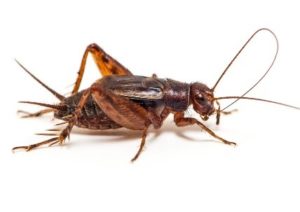
The various vegetables that you can feed your PBDs that are readily available are:
| Artichoke Heart | Asparagus (raw) | Bell peppers (raw) | Bok choy |
| Butternut squash | Cabbage (raw) | Carrots | Celery |
| Cucumber (peeled) | Green beans | Lentils (cooked) | Kale |
| Parsnips | Turnip greens | Zucchini (raw) |
Vegetables can also be dusted however, you will find it easier to get a light coating over insects.
The various fruits that you can feed your PBDs that are readily available are:
| Apples | Apricot | Blackberries | Cherries |
| Cranberries | Figs | Grapes | Grapefruit |
| Guava | Mangos | Melons | Nectarine |
| Papayas | Peaches | Pears | Pineapple |
| Plum | Prunes | Raisins | Strawberries |
| Watermelon |
In all instances we recommend you removed seeds to avoid any chock hazards.

Whilst you will rarely see your PBDs drinking water from their water bowl, if at all, it’s very important to have one in the enclosure. Not only does the water bowl serve as an important assistant to keeping up the humidity in the enclosure, but on the rare occasion your PBD does want a drink, you need a water source to be there.
When picking a water bowl of younger PBDs ensure the water won’t be too deep to avoid accidental drowning.
Handling:
When your PBD is a baby it is recommended to keep your handling time down to only a few minutes per day so you don’t scare it. As it grows older you will be able to increase the time you have it out of the enclosure, allow it out to explore, etc, however ensure your environment is safe, chemical free, and there is no likelihood of a dog/cat or similar, wondering into the same room when you do, as you don’t want your PBD becoming someone else’s meal.
If you have any concerns or would just like some advice please feel free to contact The House of Scales via the following:
– Facebook: The House of Scales Reptiles
– Email: thehouseofscales@outlook.com
– Website: www.thehouseofscales.com.au

